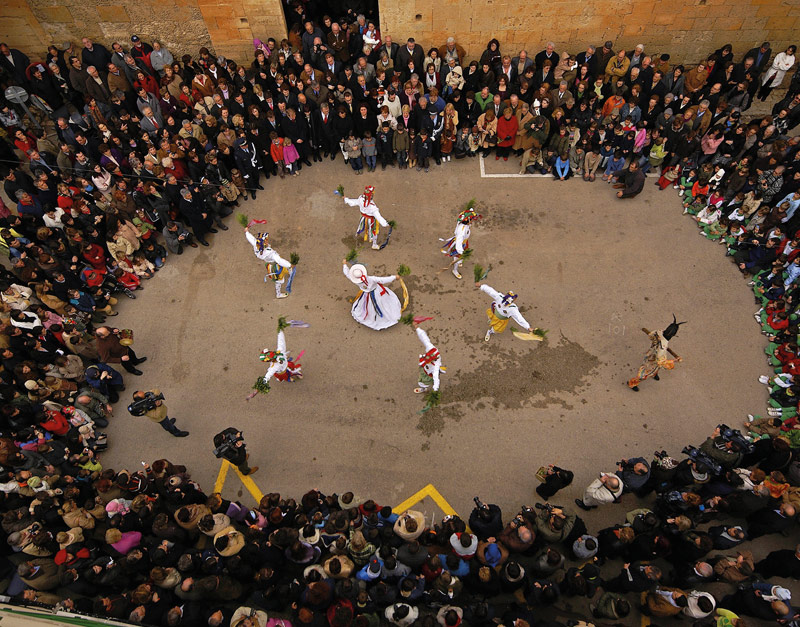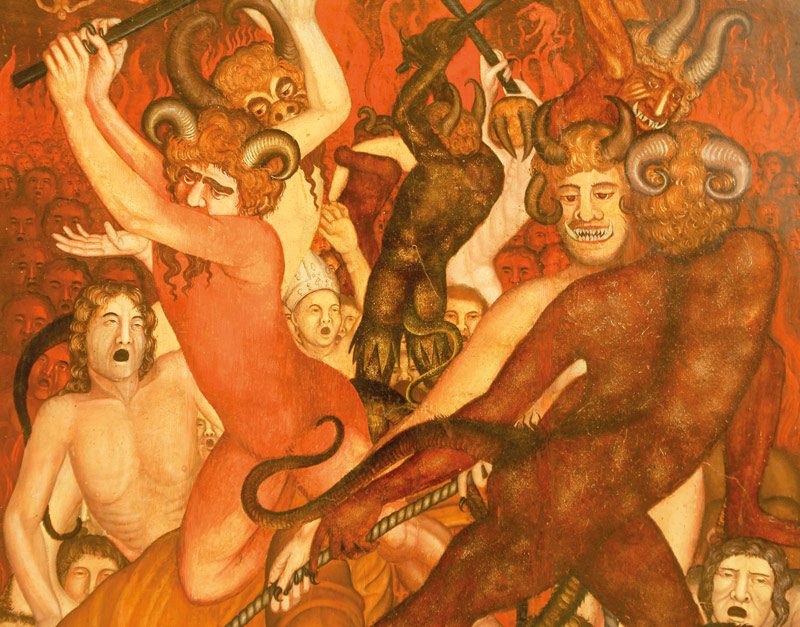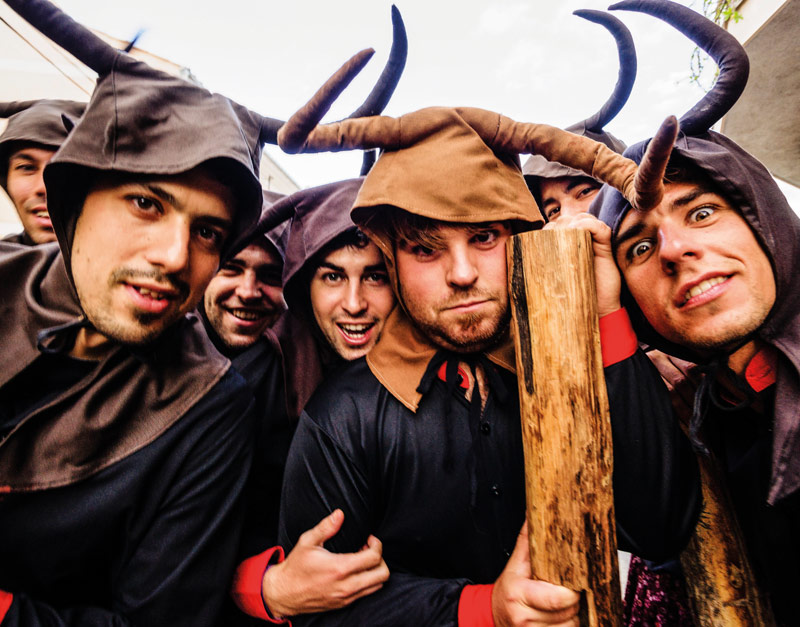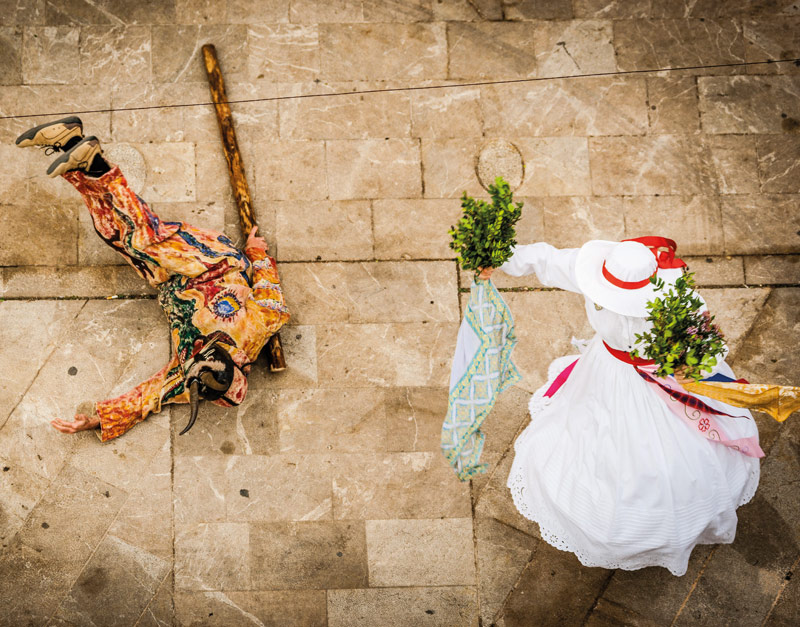Fire and demons are the stars of some of Mallorca’s most popular festivals, with rituals masks and unique to every municipality. An atavistic type of worship that dramatizes the eternal struggle between good and evil.
From the beginning of time, fire has been essential for humans, who have associated it to magic and mystery. On Mallorca, its qualities emerge in some singular fiestas, deeply-rooted in the most remote tradition, in which it is linked to its dark lord, the devil or dimoni. A character that embodies temptations and evils in Christianity, but one which transforms on the island to become an innocent, mischievous dimwit.
Fire and demon, primal symbols that feed on the agricultural roots of a traditional society, appear in two important festivals: Sant Joan —which marks the summer solstice— and Sant Antoni Abat, the feast day of the protector of animals and flocks, invoked by farmers and the rural world.
On the eve of Sant Joan —St. John’s day— on 23rd June, a spectacular correfoc is held in Palma and other towns, in which different groups of demons (colles de dimonis) pursue the public with their firesticks, accompanied by incendiary beasts like the Drac de Na Coca, a legendary dragon of Palma. The spectacle ends with a big percussion ‘batucada’ which signals the start of the dance with music.
But fire and demon exhibit their maximum splendour in the heart of the winter: on the night of 16th January in the festival of Sant Antoni Abat (St. Anthony Abbot). It is celebrated in all of the villages of Mallorca, but is particularly spectacular in Sa Pobla, Manacor or Artà. The celebration revolves around the conflict between good and evil. The demons and the saint roam the streets performing dances in which Saint Anthony is located in the centre and the demons —human temptations— circle around him in an anti-clockwise direction. At night, huge bonfires or foguerons are lit and groups of neighbours dine and hold glossa contests, battles of verses with eschatological content or about local affairs.
The thousand faces of evil
Popular imagination attributes a physical form to the dimoni: it is ugly, hairy, red or black in colour, and has a tail and twisted horns like a billy goat. And in Mallorca, they are even classified into categories: the Dimoni Gros is the main demon, the most wcked one, followed by an entourage of dimonions, mischievous inferior spirits. Each town has its own demons. Here are the most prominent ones.
MANACOR. The capital of the Llevant region in the east of the island celebrates the festes de Sant Antoni for three days. The main element is the colla de dimonis, a group of three demons led by the Dimoni Gros, who wears a red sash and a large mask of the same colour covered in black hair, with huge incisors and horns. It is followed by two dimonions, who play mischievous tricks amongst the public and have a cowbell at the bottom of their back. All the demons carry a large stick and wear a sackcloth outfit with geometric shapes and red and green drawings painted on it.
ARTÀ. The Sant Antoni festival begins on 16th January, honouring the patron saint with liturgical ceremonies and correfocs, demons which run through the village with torches and standards. But the most eagerly-awaited moment is the ball del dimoni (dance of the devil), which locals attend dressed in a white shirt with a red kerchief in order to dance to the sound of the drums, sticks and demonic cowbells. The symbol of the fiesta is two demons dressed in black with a white skeleton painted on them; they also wear a red mask with tongue hanging out, broken teeth and enormous, twisted horns. In their hand they carry a large cane which acts as an infernal sceptre.
MURO. In the Plaça del Convent demons, music, carnival figures with big heads and a pair of giants converge and dance in front of the town hall, a ceremony which is followed by the central open-air dance. The residents organise dinners in the street and eat delicious espinagades, closed pies filled with eels or loin of pork and vegetables. The demons wear a black suit with flames painted on it, and carry a pitchfork, whilst sporting a hairy mask and large, twisted horns.
SA POBLA. Saint Anthony is the patron saint of Sa Pobla, to whom tribute is paid in grand style during the weeks of festivals that come to a head on 16th January. In the afternoon Sant Antoni and the dimonis appear, the latter with a broom which they use to jab at youngsters. Most of the demons wear red, black bat’s wings and a large black and red mask, and they accompany a couple of totally black dimonis. They parade with giants and big-headed carnival figures down to the church, where full mass is held. Afterwards the bonfires are lit, the demons dance in the Plaça Major and the big music and firework show begins.
CAPDEPERA. This town holds a singular celebration on the evening of 16th January: the meeting of the dimonis and the rompuda de la creu de murta. Opposite the church a large cross made of myrtle twigs is set on the ground; the demons come, one on either side, and greet one another with an intense hug which gives way to their first dance. Afterwards they turn towards the myrtle cross and make it fall apart with their legs and their canes. From here, they roam the village and go to the foguerons. Capdepera has four demons: two of them are the stars of the local festival of Sant Antoni locales and the others appear in the festival held on the following weekend in Cala Rajada. Every demon wears a large mask with prominent incisors and holds a cane in its hand. They wear brown and green outfits with drawings of reptiles, plants, flames and geometric shapes on them.














